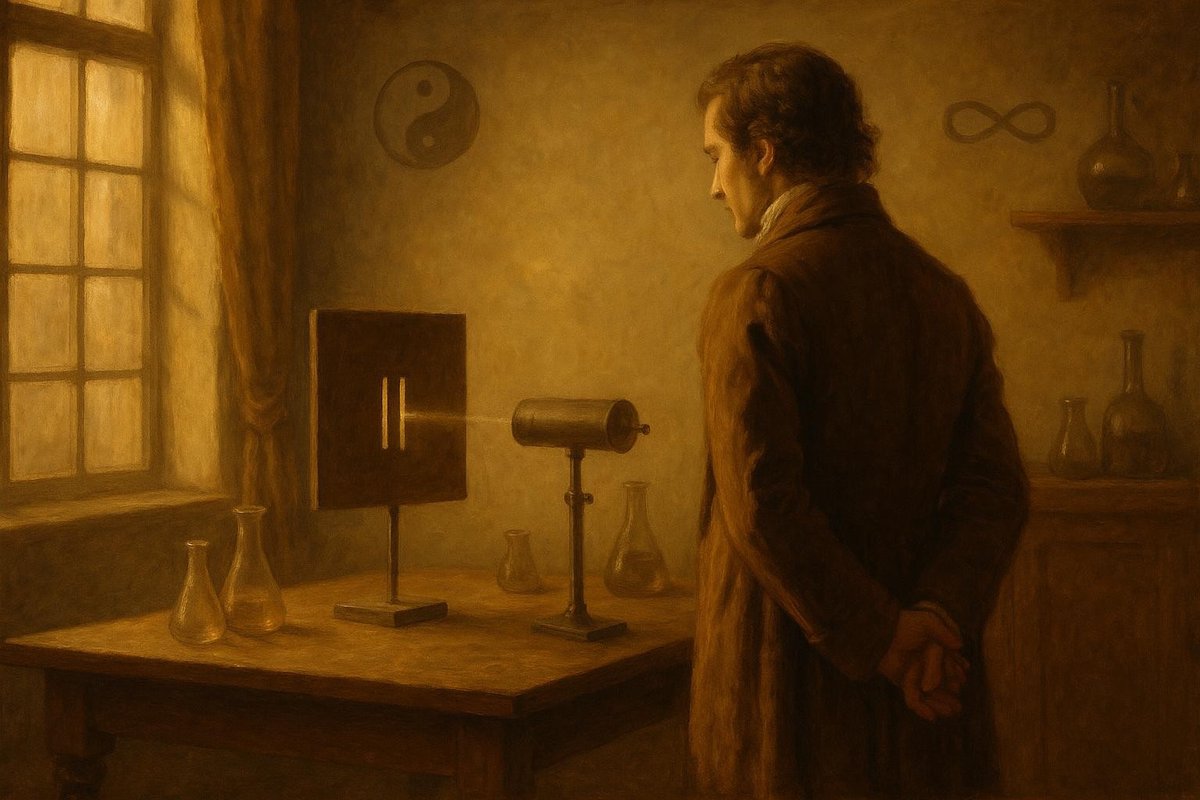
Introduction
In a world ever striving for clarity, the double-slit experiment stands as a beacon of enigmatic wonder. This simple yet profound setup, where particles flirt with both wave and particle identities, challenges not only our scientific understanding but also the very essence of how we perceive reality. Could it be that the dance of electrons through slits is more than just a scientific curiosity? Might it mirror the dual nature of our own understanding? Let’s delve into this question and explore what this experiment reveals about light, and perhaps, ourselves.
Hypothesis & Context
Once upon a time, the nature of light was a topic of fierce debate. Was it a wave, undulating through space, or a stream of particles, like tiny bullets flying through the air? In the 17th century, Isaac Newton posited that light was made of particles, while Christiaan Huygens argued for its wavelike nature. This duality persisted, unresolved, until the early 19th century when Thomas Young’s double-slit experiment offered a glimpse into a new possibility.
- The hypothesis: Light behaves as both a wave and a particle.
- Prior understanding: Newton’s particle theory vs. Huygens’ wave theory.
- The problem: No existing theory adequately explained all observed phenomena.
As the industrial age blossomed, so too did human curiosity about the universe’s mysteries. The double-slit experiment emerged amid a cultural backdrop of scientific revolution, when the world began to question not only how things worked, but why they worked the way they did.
Setup & Method
Picture a serene laboratory, a humble setup: a screen, a barrier with two slits, and a source of light. Young’s apparatus was deceptively simple. Yet, it unveiled a cosmic paradox. When light passed through the slits, it didn’t just act as one would expect of particles—forming twin bands on the screen. Instead, it painted an intricate pattern of interference, akin to ripples colliding in a pond.
- Light source directed at a barrier with two slits.
- Observation of light patterns on a screen behind the slits.
This elegant method challenged the deterministic worldview that dominated prior scientific inquiry. As the light danced between wave and particle, it whispered secrets of a reality more intertwined than perceived.
Results & Reactions
The results were as baffling as they were beautiful. Light, when unobserved, created an interference pattern indicative of wave behavior. Yet, when observed, it reverted to acting like particles. This dual behavior has sparked debates that echo into our modern understanding of quantum mechanics.
- Unobserved: interference pattern formed, suggesting wave behavior.
- Observed: particle pattern emerged, suggesting particle behavior.
Albert Einstein himself was perplexed, famously remarking, “God does not play dice with the universe.” The experiment challenged not just the physicists of its time, but also the very foundation of knowledge itself. How could mere observation alter reality?
Implications
Today, the double-slit experiment remains a cornerstone in the study of quantum mechanics, raising questions about the observer’s role in defining reality. It suggests that our understanding of the universe is not as absolute as we once believed. Instead, it is a dynamic tapestry woven with possibilities, much like human thought itself.
- Implication: Reality is influenced by observation and measurement.
- Philosophical inquiry: Do we shape the universe through our perceptions?
As with light, our understanding flickers between states, ever-changing as new information comes to light. Just as the electrons’ paths are influenced by an observer, so too are our beliefs shaped by our experiences, lending credence to the notion that the true nature of understanding is dual in itself.
In conclusion, the double-slit experiment offers a profound reflection on the duality inherent in both the physical world and our understanding of it. By exploring this dance between waves and particles, we find ourselves pondering the deeper questions of existence, challenging us to rethink the boundaries of knowledge and perception.
Fuel Someone Else’s Curiosity
If the mysteries of light and understanding have intrigued you, consider sharing this exploration with others. Start a conversation over dinner or in a classroom. The questions that arise from such musings not only fuel curiosity but also ignite the collective quest for knowledge. After all, the universe is vast, and there’s so much more to discover together.

Leave a Reply